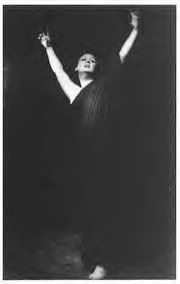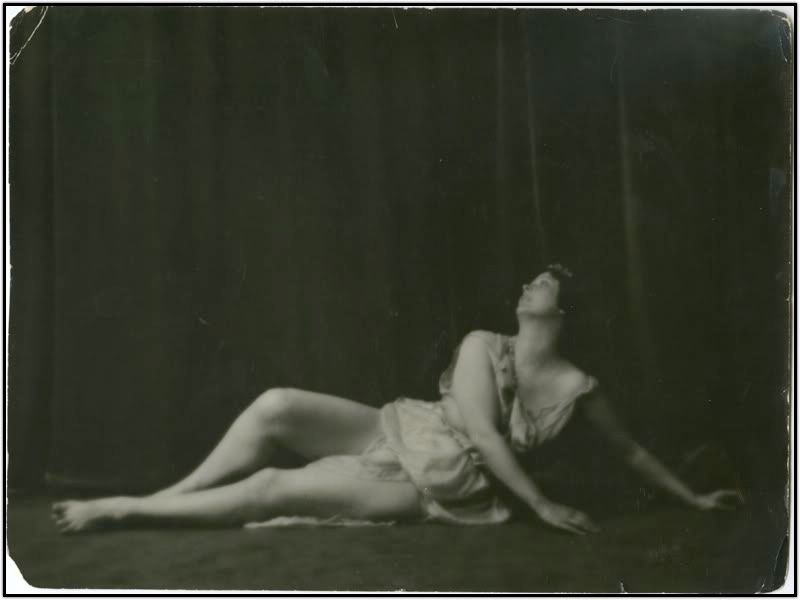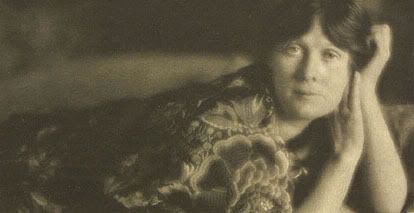Dance is filled with icons, dancers who changed the Art with such fervor in their own lifetime, the ripples of their innovations continue. Isadora Duncan was one such person.
Isadora pioneered the modern dance movement. According to Lori Belilove, founder of the Duncan Dance Foundation, Isadora thought the development of her dance was “not an invention, but a rediscovery of the classical principles of beauty, motion, and form.” She went back to the Greek ideal

and liberated the movement from the classical strictures placed upon it by modern interpretations.
In her book, "My Life," she writes “It has taken me years of struggle, hard work, and research to learn to make one simple gesture…” By retreating and uncovering the ancient, she found the place beyond: the universal. She wrote “I bring you dance...where I have I discovered it, by the Pacific Ocean, by the waving pine forests of the Sierra Nevada…”

Isadora believed “all true artists are revolutionaries,” and applied her findings not just to movement but also to politics. She traveled to Russia and set up a school there, and despite great hardships and the Bolshevik Revolution, she created “Revolutionary,” one of her most mature works.

Isadora's politics were personal, she was an early feminist, dedicated to the reforms of the womens' liberation movement in its early twentieth century incarnation.
Dance wasn’t just about the body as an ideal, but about a woman’s essence—the part of her that linked her to nature, not apart from it. She wrote:
“Oh Woman, come before us before our eyes longing for beauty, and tired of the ugliness of civilization, Let us see the line and harmony of the body beneath, dance for us. ..Give us again the joy of seeing the simple unconscious pure body of a woman.”

I remember learning the “Narcissus”

from my Duncan dancer and performer, Diablo Dance Theater, Lois Ann Flood. The choreography on the surface was so simple, and yet once inside the movement, it felt complex and ancient. The dance seemed to be taking me over. Isadora would say it was,” like a great call it has come and women must hear it and answer it.” Isadora Duncan, The Art of the dance.
Recently I met with my teacher to ask what choreographer today she thought has inherited Isadora’s legacy. I also wondered how dancing Duncan for so many years has informed Lois' own choreography at the recent International Festival of Poetry and Dance 2013.

Lois thinks that Pina Bausch is a close relative of Isadora as her work also uncovers essential human desires through movement that is both dancerly and essential/pedestrian as seen in this Wim Wenders film trailer: " Pina."
Bausch layers the movement experience with voice, music, and projected images, creating her own "Tanztheater." And exhibit examining this correlation recently opened in Milan, Isadora and Pina. Dance of the spirit, Liberation of the body.
Bausch's work however questions the triumph of human spirit, preferring to allow the viewer to create their own resolution.

Isadora was different. She wrote, " I have only danced my life, as a child I danced the spontaneous joy of growing things.
 ”As an adolescent I dance with joy
”As an adolescent I dance with joyturning to apprehension of the first realization of tragic undercurrents; apprehension of the pitiless brutality and crushing progress of life.”

Isadora believed in the wave, the going out and the coming back. As an artist and as a woman, she continues this fluid motion, coming back inspiring us to dance and create.

I am not a dancer but I love their dance, because it is so simple. It's like a life itself; life it's about breathing. So simple.
ReplyDelete(I respect a classical ballet, but actually I don't understand it; I mean the feeling is not the same and the enjoyment is not the same.)